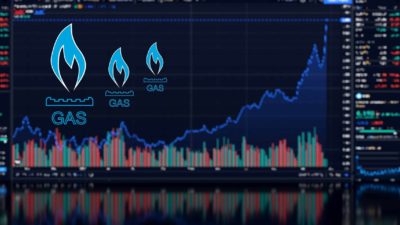It is an unrelenting bloodbath in the Australian share market today. The S&P/ASX 200 Index (ASX: XJO) is tumbling 1.38% lower as investors reflect on surging bond yields.
Now at heights not seen in more than a decade, the generous yields on US and Australian bonds are undoubtedly prompting more people to consider whether the higher volatility associated with stocks is worth it.
At an almost 5% yield on a 10-year bond, some investors are likely cashing out of equities and allocating more capital to the debt instrument.
Hence, even defensive stock stalwarts such as Telstra Group Ltd (ASX: TLS) and Transurban Group (ASX: TCL) are coming under pressure today, along with roughly 85% of the other top 200 listed companies.
So, what's going on with bond yields?
Bond yields are back on the table
Between 2015 and early 2022, Australian 10-year Government bonds yielded less than the upper band of the Reserve Bank of Australia's target inflation rate of 3%. An era of ultra-low interest rates meant debt was cheap — which was great for borrowers but pushed income seekers away from debt markets.
Times have since changed, leaving central banks to tussle with sticky inflation.
Australian 10-year Government bond yields are now around 4.6% — the highest in 12 years. Likewise, the yield on a United States Treasury bond is in the vicinity of 4.7%, a level not witnessed since October 2007.
In short, three key drivers are influencing these burgeoning yields:
- Downgraded credit rating: Fitch Ratings lowered its AAA rating on the US government to AA+ in August. The perception of increased risk can impact the bond price, increasing its yield.
- Higher for longer interest rates: Jerome Powell, the chair of the US Federal Reserve, and others have indicated interest rates could remain elevated for an extended period.
- Issuance of more bonds: More bonds are being issued to fund government programs. An increase in the supply of bonds weighs on the price, bolstering yields.
The circumstances have fuelled views, such as those shared by Christopher Joye of Coolabah Capital, that the yields from bonds are a better proposition than equities over the next few years.
Three defensive ASX stocks I'd buy over bonds
Opting for less volatile returns from bond yields might be attractive in the short term. However, many historical examples show that real wealth is often created by the compounding effect over long periods of time.
Famed billionaire investor Terry Smith explained the compelling nature of defensive stocks in 2017, writing:
Equities can compound in value in a way that investments in other asset classes, such as bonds and real estate, cannot. The reason for this is quite simple: companies retain a portion of the profits they generate to reinvest in the business.
In my opinion, savvy investors can still derive exceptional returns from good companies listed on the ASX, rather than bailing to bonds. Not all companies can be tarred with the same brush.
Companies with modest debt levels, resilient products and/or services, trading on a free cash flow (FCF) yield — the cash generated after all expenses divided by its market capitalisation — of around 5% or more, still provide a more appealing long-term option, in my view.
The ASX defensive stocks I believe meet this criteria are Steadfast Group Ltd (ASX: SDF), Jumbo Interactive Ltd (ASX: JIN), and Coles Group Ltd (ASX: COL). Importantly, these three companies operate in industries that keep ticking through hard times — insurance broking, lottery tickets, and groceries.
Each of these companies trades on an FCF yield of 4.9% or more. In essence, investors in these companies are already 'earning' a superior return than current bond yields. Furthermore, each has the ability to reinvest and compound, unlike bonds.









